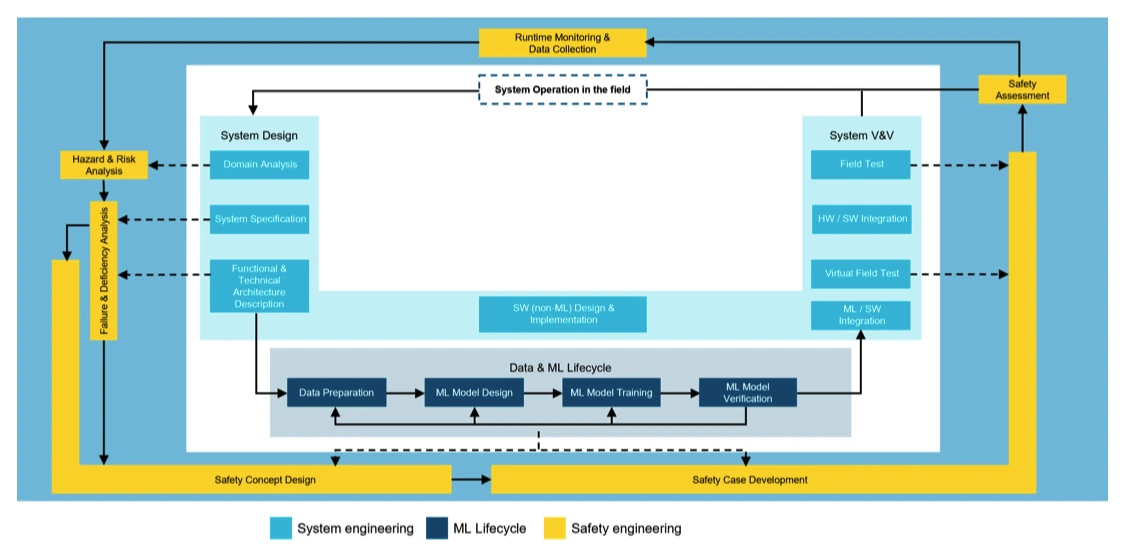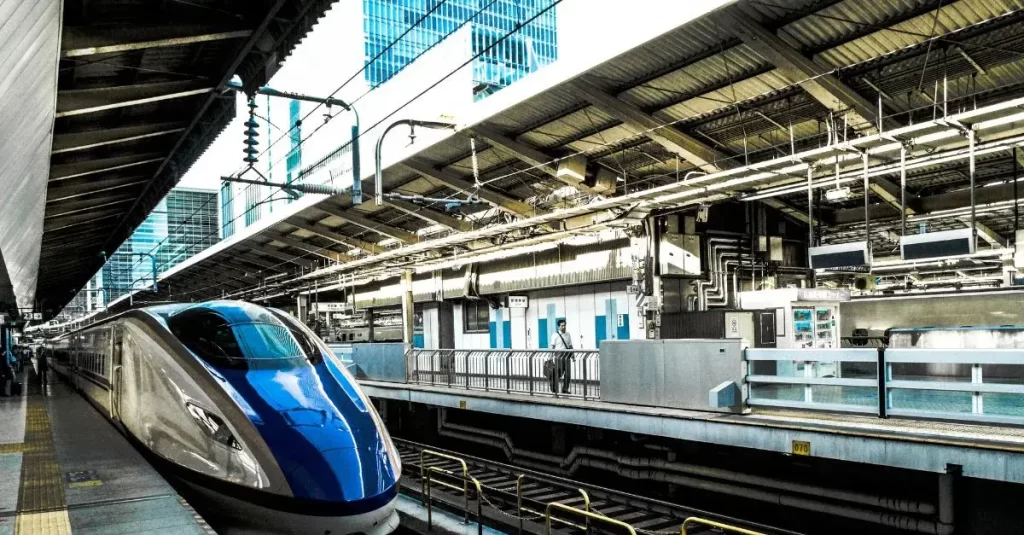The railway industry is on the brink of a transformative era with the advent of driverless train operations, often denoted as Grade of Automation (GoA) 4, on unrestricted infrastructure.
This breakthrough promises to revolutionize railway systems, offering the potential for more frequent timetables, increased flexibility in scheduling, and responsive, demand-driven train services.
Yet, achieving driverless train operations goes beyond conventional automation; it necessitates the integration of Artificial Intelligence (AI) and Machine Learning (ML) technologies to perform tasks traditionally handled by human train operators, such as obstacle detection using computer vision techniques.
Ensuring the safety and reliability of AI-based systems in the railway domain is an intricate challenge.
While ML shows great promise in addressing these challenges, it also introduces complexities related to safety assurance.
This article delves into the concept of MLOps solutions (Machine Learning Operations) within the railway industry context, with a particular emphasis on developing a robust and continuous process for integrating ML-based systems while ensuring safety.
Challenges in the Railway Industry
The integration of MLOps in railway industry operations poses unique challenges:
- Continuous Adaptation: Unlike traditional software development in the railway domain, where updates are infrequent and occur over long intervals, ML models used in safety-critical contexts require continuous adaptation. This need arises from factors such as anomalies detected during operation, changes in operating contexts, and evolving regulations.
- Safety Standards: The absence of standardized processes for safety-critical ML-based systems in the railway industry complicates the development and assurance process. Safety standards developed for traditional software may not be directly applicable to ML.
- Complex Testing: Automating software-in-the-loop and hardware-in-the-loop tests, data analysis, and other processes is a complex task that requires specialized tools and expertise.
- Data Quality: Ensuring the quality of training and test data, as well as handling labeling inconsistencies, is critical for the reliable development of ML models.
Understanding MLOps In Railway Industry
MLOps is an extension of the DevOps culture and practices, tailored specifically to machine learning applications.
While DevOps aims to blend software development and operations, MLOps is designed to unify ML application development and ML application operation.
Its core objective is to create a seamless pipeline from ML model development to its operational deployment.

The Safe MLOps Process for Railways
The safe MLOps process for the railway industry integrates system engineering, safety assurance, and the ML lifecycle into a comprehensive and continuous process. It consists of several key stages:
- System Engineering: Aligned with the system development process specified in EN 50126-1, this phase includes domain analysis, system specification, architecture description, and the design and implementation of both ML and non-ML software. Integrating ML models into the system architecture is a crucial step.
- Data & ML Lifecycle: Focused on ML model development, this lifecycle encompasses data preparation, model design, model training, and model verification. Ensuring data quality and assessing ML model performance are vital components of this phase.
- Safety Engineering: The safety engineering lifecycle includes hazard and risk analysis, failure and deficiency analysis, safety concept design, safety case development, safety assessment, and runtime monitoring with data collection. This phase ensures that the ML-based system is safe and complies with safety standards.
Automation plays a pivotal role in each stage of the Safe MLOps process, allowing for continuous engineering and assurance of ML-based systems. The process aims to create a robust safety argumentation, incorporating evidence from various stages of development and verification.
EasyFlow’s Pilot: The Collaboration with Lithuanian Railways
EasyFlow in collaboration with the Mobility Innovation Center and Lithuanian Railways, conducted a successful pilot project using Computer Vision technology to measure passenger flows on local trains.
The software accurately counted passengers, including those with children, pets, or bicycles, and integrated this data with ticket sales to reduce fare evasion.
This innovative use of AI technology demonstrates its potential for optimizing public transport processes and improving passenger services. Read more about that here.
Frequently asked questions
How is AI used in railway?
AI is used in railways for various purposes. It plays a crucial role in optimizing train schedules and routes, enhancing predictive maintenance by analyzing sensor data to prevent equipment failures, improving safety through obstacle detection and automatic braking systems, and providing real-time passenger information and personalized services. AI also aids in managing railway infrastructure efficiently, reducing energy consumption, and enhancing overall operational efficiency.
Can AI drive trains?
Yes, AI can drive trains. AI-driven autonomous train systems, often referred to as driverless or autonomous trains, use advanced technologies such as computer vision, machine learning, and sensors to control and operate trains without human intervention. These systems can accelerate, decelerate, maintain safe distances, and respond to various operational scenarios, enhancing efficiency and safety in railway operations. However, they often operate under human supervision and are subject to rigorous safety regulations and standards.
What are the IoT solutions for railways?
IoT solutions for railways encompass a range of applications. These include sensor-equipped infrastructure to monitor track conditions, trackside equipment, and rolling stock for predictive maintenance, ensuring safety and reliability. IoT enables real-time tracking of trains and cargo, optimizing scheduling and logistics. Passenger services benefit from IoT through real-time information, ticketing, and onboard connectivity. IoT also enhances security by monitoring railway assets and detecting unusual activities. These solutions collectively improve operational efficiency, safety, passenger experience, and asset management in the railway industry.
Conclusion
The railway industry stands on the cusp of a technological revolution with the integration of AI and ML technologies for achieving driverless train operations. However, ensuring the safety and reliability of these ML-based systems in complex and ever-changing railway environments is a formidable task.
The concept of MLOps offers a structured approach to tackle these challenges by integrating system engineering, safety assurance, and the ML lifecycle into a continuous and automated process. As the railway industry continues to embrace AI and ML, the development and standardization of safe MLOps processes are vital for achieving reliable and secure driverless train operations.
With the ongoing evolution of technology and safety standards, the railway industry is poised to revolutionize train operations and enhance passenger safety through the power of AI and MLOps.
Not Sure How AI Can Help Your Business? Let’s Talk!

Ugnė Daniūnaitė
Business Development Manager
Book a no-obligation free consultation with our expert.



